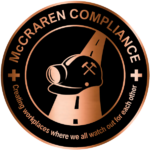The TSCA, which the Lautenberg Act amended in 2016, requires EPA to address risks by proposing, within one year of a chemical review’s release, regulatory actions such as training, certification, restricted access and/or ban of commercial use, and then to accept public comment on any proposals.
According to EPA, bans related to asbestos diaphragms and sheet gaskets for commercial use would take effect two years after the effective date of the final rule. Bans related to asbestos-containing brake blocks in the oil industry, aftermarket automotive asbestos-containing brakes/lining, other vehicle friction products and other asbestos-containing gaskets would take effect 180 days after the effective date of the final rule.
Additionally, the agency notes that although the proposal doesn’t address legacy uses and disposal of asbestos – defined by the agency as “conditions of use for which manufacture (including import), processing and distribution of commerce no longer occur, but where use and disposal are still known, intended or reasonably foreseen to occur (e.g., asbestos in older buildings)” – such uses remain under review under Part 2 of the final risk evaluation.
Released Dec. 28 and announced via a notice published in the Dec. 29 Federal Register, Part 2 of the evaluation is set to be finalized by Dec. 1, 2024, EPA says.
In a press release, Linda Reinstein, president of the nonprofit Asbestos Disease Awareness Organization, praises the measure as “a strong step forward in eliminating exposure” to the substance.
“We strongly support putting an end to the dangerous use of chrysotile asbestos by the chlor-alkali industry,” said Reinstein, whose late husband, Alan, died from mesothelioma in 2006.
Meanwhile, Marty Durbin, president of the U.S. Chamber of Commerce’s Global Energy Institute, contends the proposed ban “will have unintended consequences on safe drinking water and our already-precarious supply chain of consumer products.”
In a Chamber press release, Durbin said asbestos is used in the production of chlorine, “which is critical to treating drinking water and in the manufacturing of many pharmaceutical, bleach and medical goods.”
He added: “The use of asbestos in the chlor-alkali process is tightly regulated and used safely every day. We urge the EPA to take a more realistic approach to asbestos regulations that will protect health while recognizing the vital role it plays in the production of products that keep Americans safe.”
In 1973, EPA began banning spray-applied material for fireproofing or insulating purposes that contained asbestos. The agency prohibited more uses of asbestos two years later and attempted to issue an almost total ban on the substance in 1989 under the TSCA.
However, the 5th U.S. Circuit Court of Appeals overturned the final rule two years later. Currently, only new uses of asbestos initiated after 1989, along with five other types of products, are prohibited.
McCraren Compliance offers many opportunities in safety training to help circumvent accidents. Please take a moment to visit our calendar of classes to see what we can do to help your safety measures from training to consulting.


